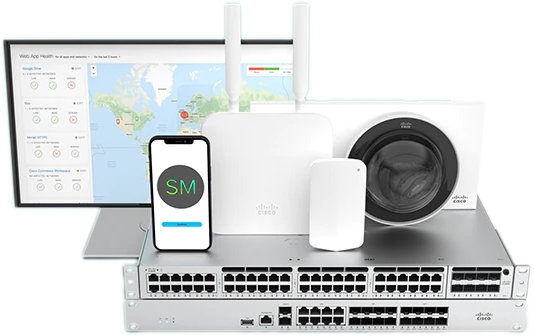
Meraki has just introduced a big new update to their MS series switches! The Meraki MS120 and MS210 lines are brand new, and intended to fill in various gaps in coverage for small to medium sized operations. These are state of the art switches with superior Meraki usability, with a variety of port numbers and price points to suit all budgets.
Like most Meraki series releases, the differences between these and previous models are evolutionary rather than revolutionary. Still, this is one of the most diverse sets of releases Meraki has made, and there's something here for just about everyone.
 A Look At The New MS120 And MS210 Meraki Switch Lines
A Look At The New MS120 And MS210 Meraki Switch Lines
So, for a quick overview, the Meraki MS120 and Meraki MS210 lines are fairly similar with only a couple main distinctions. They're all Gigabit-speed Layer 2 switches, with Gigabit uplinks, and you have your choice of various port numbers between 8 and 48. Varying levels of PoE/PoE+ power are available as well, depending on your needs. They also put a priority on stackability, with all models supporting virtual stacking.
Generally, the major differences are that the Meraki MS210 products have integrated power supplies and\or support for secondary redundant power, plus they have physical stacking capability as well.
So, these are mid-range, mid-budget, mid-power switches. Which is fine, since they're intended as multipurpose devices that might find a home in a lot of different networks. Even then, however, there are a few unique entries in the lineups.
Probably the most notable is the MS120-8. These are fully self-contained desktop sized units, packing a lot of power into a small fanless unit. They would be perfect for startups, small branch offices, or deployment at remote locations. These are now some of the smallest and cheapest Meraki switches available, making them an excellent entry point into the lineup as well.
 At the high end, the 48-port models also offer high levels of PoE+ power, with options for a 720W power budget. Given their competitive pricing, that makes them a great choice for midsized offices that have a lot of attached Internet appliances. They'd also be a good choice for ensuring your 802.11ac Wave 2 wireless APs have enough power to operate at max capacity.
At the high end, the 48-port models also offer high levels of PoE+ power, with options for a 720W power budget. Given their competitive pricing, that makes them a great choice for midsized offices that have a lot of attached Internet appliances. They'd also be a good choice for ensuring your 802.11ac Wave 2 wireless APs have enough power to operate at max capacity.
Overall, these are solid midrange units and are perfect for operations who need hardware that isn't flashy, but just gets the job done.
The Meraki Polish And Ease Of Use
Of course, we can't talk about Meraki hardware without mentioning the ease-of-use which is Meraki's hallmark. Like all Meraki products, these various Layer 2 switches are self-configuring and auto-optimizing as part of the mesh network system created by Meraki.
Deployment of a given device should only take a couple minutes. You just plug it in, then register its serial and license numbers online. The system automatically does the rest.
In the meantime, the Meraki Dashboard GUI gives you unprecedented levels of oversight and control of your network, but in an easy-to-use format that virtually anyone can learn quickly. You no longer need an expensive networking guru to manage large networks. Meraki is deliberately designed to remain simple to manage, even when dealing with large networks spread over many separate locations. Thanks to Meraki's cloud-based system, they're easy to keep track of and manage from anywhere.
The Meraki Lineup Keeps Getting Stronger
At this point, there's a Meraki switch to suit businesses of any size and scale, from startups to the largest of organizations. Is Meraki a good choice for your operation? Just contact Hummingbird today for a free consultation, or to try out Meraki for yourself!








